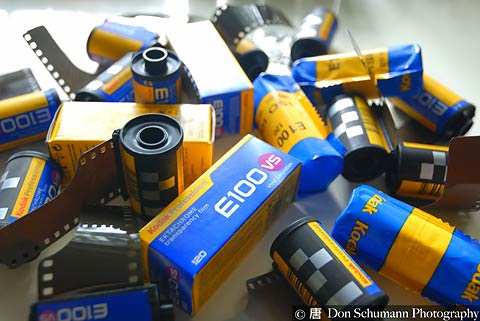Hard Landing and Bouncing

Don flies C-Class on a VN flight, Hanoi
One of another near miss incidents on air in recent year he had --
Gosh! Lightning Strikes My Aircraft
Just as this giant air jetliner finally descending for coming in to land on at MLE, I felt immensely alleviating, around 4:45 am, local time. The cabin crew were ready for final touch down. The tension mounted without warning as I glanced out the windows. The shocking window views were nothing but murky rolling sea waves. The sight made me want to make a helpless silence outcry instantly. We were approaching either slanted too much or simply too low!
The equipment inadequate tiny airport situated on an entire sole island, hence, takeoff and landing becoming a miss or hit thing at that time!
vii) Then the big iron bird jerked up abruptly, sleepyhead passengers now all shaken up for the first time now. We were flying thrusting in a circular arc, or rollercoasting upward I should say, along with screaming with fears. Long minute after, the plane swooped down on the runway tarmac but well so hard that it bounced up high involuntarily crooked. A somersault was impossible but the least-expected scenario of fatal crash was biting my ear off. Yet another commotional noise confessedly arose. Then, and the aircraft bounced the second time again, it quieted the whole passengers onboard, each time it touched the ground in a completely different angle and on a different side of the centerline. It was a pretty jarring experience.
All my senses were alarming like hell. "I don't want to die here (at MLE, or Malé International Airport), and now (in 1990)!" I whispered to myself. Because I did not want to startle my less-traveled friend sat next to me. That did not make anything better, either, already hearing people mumbling praying for mercies.
-----
Twists and Turns
Even though this trip was half-leisure purpose, but not an easy one.
It all started in Hong Kong, around the tail end of 1980. I had come across an attention grab exhibition themed Maldives held by a Japanese photographer. I knew it is a picture-perfect location for long, but that photo exhibition really kicked me off.
I started to do the thorough legwork and planning the trip, and get travel mate, along with my infinite workloads.
i) My travel companion had never set foot outside of his nation and would have to travel from his hometown. That meant I would have to fly into Taiwan as soon as my previous job done. And originated the journey there flying off with him like a travel babysitter. So I was spending so much time shopping around for air tickets for us. It turned out, none of agents in Taiwan knew/heard of Maldives and couldn't issue the tickets bounding for that destination, of course. In the end, I had had to get two separated segments of round trip tickets for both of us: TPE-SIN issued in Taiwan, and SIN-MLE booked from Singapore. Well, first long-haul problems solved remotely as I was juggling back and forth in Asia!
ii) I had come up an idea of buying a new luggage trolley for my carry-on delicate, but way too heavy, photo equipment instead of lugging it around between the air terminals and boarding gates. It turned out the mint fresh metal trolley, couldn't withstand the weight of my gear, had bent, then broken while I had rushed along the airport corridors to meet, to regroup with my travel pal at TPE.
iii) The Chinese/Singaporean immigration officer failed to try to read/spell out my English name (for years, Hong Kong people and Singaporeans always have problem to read pronouncing my name right from my AMEX/Passport/Air Tickets...) on my entry form. "Asian should be Asian. What a terrible name!" The old man groaned at me in Mandarin. Then he tossed my form with a sudden thrust down on the counter. "Rewrite it!" He barked surly making me write down my name in phonetic alphabet.
iv) Upon our prior discussion, with my pal, we both agreed to hang out inside the SIN airport till another flight scheduled at before midnight that day, instead of a half-day city tour. Our journey to travel from Taiwan to Maldives had to make a long break at Changi airport, Singapore without connecting flights in 9 hours.
v) At last (I thought), we proceeded to the boarding gate before 23:00. They unusually had had the metal detector and x-ray machine installed at the entrance to the waiting concord with only an Indian/Singaporean officer posted, today. What now? I'll be blessed (or darned - take your pick)!

** For I am a well-traveled professional photographer. I knew it so well to remove all of the paper carton packaging of each roll film before check-in and boarding, then politely ask for a "hand check (film)" is a golden rule. It had never caused me any trouble for carrying so many films and had not been asked for a hand check, either. Not for the following twenty something years of my frenzy flying schedule, either. But, this time! **
The young officer at the entry to our boarding gate area refused to hand check a hundred rolls of packaging already removed slide films. The professional 120 format roll films unlike the typical, 135 format, films having another metal protecting cases. The 120 (format) films are vulnerable to lights without the packing alone. "I am going to open it one by one if you don't put it through x-ray!" The officer talked with teeth clenched hard.
vi) Just as this giant air jetliner finally descending for coming in to land on at MLE, I felt immensely alleviating, around 4:45 am, local time. Spiffing!! I am rejoicing beyond words and assuming the ideas of putting all actuality behind as the rêveur had finally unfolded before my drowsy eyes!
-----
In aviation a hard landing is an especially rapid or steep descent.
Landing is the final phase in flight where the vehicle returns to the ground. A hard landing occurs when the vehicle impacts the ground with a greater vertical speed and force than in a normal landing. The average vertical speed in a landing is around 2 metres per second. Anything above is classed as 'hard'. Hard landings can be caused by weather conditions, mechanical problems, over-weight aircraft, pilot decision and/or pilot error. The term hard landing usually implies that the pilot still has total or partial control over the vehicle, as opposed to an uncontrolled descent into terrain (a crash) which usually results in the destruction of the vehicle. Hard landings can vary in seriousness from simply causing mild passenger discomfort to situations resulting in serious vehicle damage, structural failure, injuries, and/or loss of life. When an aircraft has experienced a hard landing, it has to be inspected for damage before its next flight.










Comments
Post a Comment